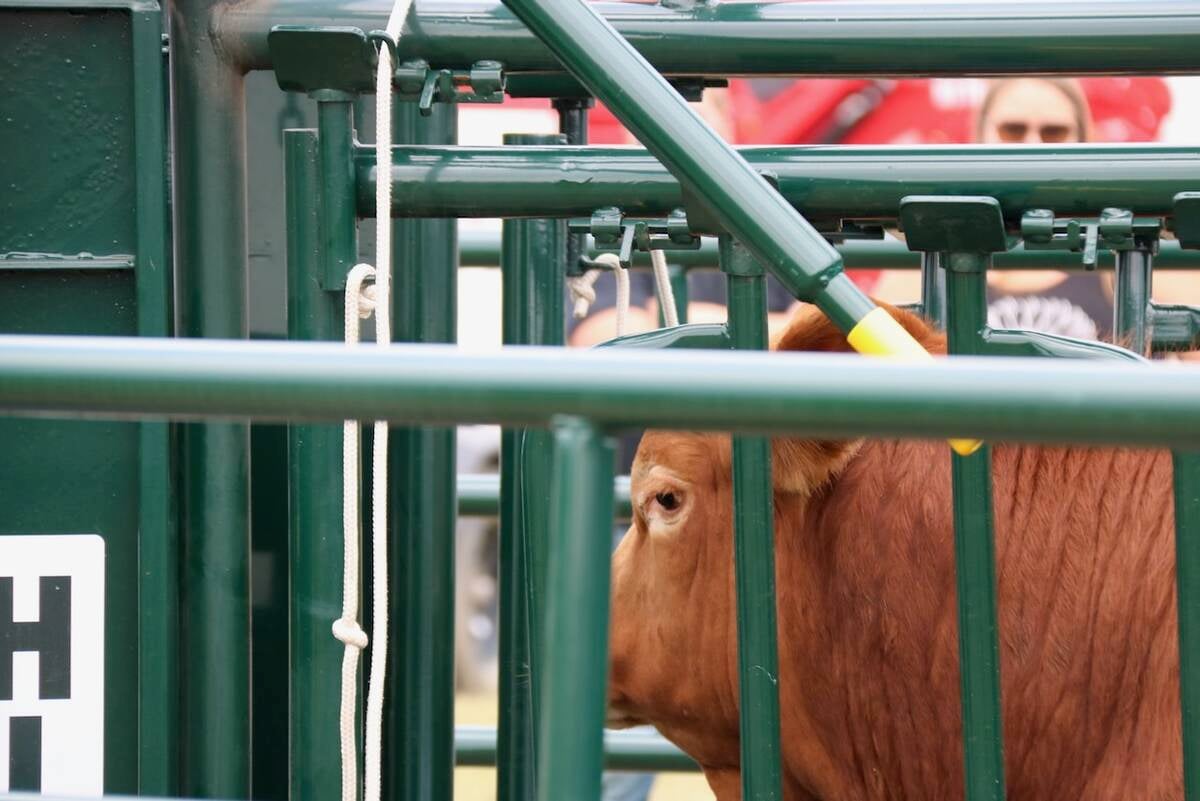Good management | Animal welfare practices often improve beef quality, says auditor
The quality of Canadian beef is improving, says an industry audit released June 18.
The national beef quality audit sponsored by the Canadian Cattlemen’s Association examined 35,000 carcasses, which represented one percent of national slaughter. Auditors worked on the processing floors and coolers of federal packing plants to assess carcasses from arrival at the plant to complete fabrication.
The full report will be discussed at a seminar in October.
The survey found fewer bruises, mud, brands, injection site wounds and damage from horns than in 1999 but more condemned livers and dark cutters.
Read Also

Good handling equipment a must on cattle operations
It’s important for the safety of producers and everyone else dealing with their stock that handling equipment is functional and safe.
Injuries from bruises and injections must be cut away. About one-third of the cattle had some form of bruising, mostly in the loin area.
In 1999, more than half were bruised. One to three pounds must be trimmed away, costing the industry $6.7 million.
Animal welfare codes of practice have improved since the last audit, and instituting some of those recommendations probably made a difference, said audit leader Mark Klassen of the CCA.
“It is hard to attribute improvement to any particular factor, but oftentimes the things we do for quality benefit animal welfare and the things we do for animal welfare benefit quality,” he said.
“There is a reward for good management and you can see that in multiple aspects.”
Less damage from brands and bruising may also be attributed partly to producer education through the Verified Beef Production program, said Terry Grajczyk, national program manager.
“This resulted in positive improvements to how cattle are handled and injection protocols, particularly at the feedlot level,” she wrote in an e-mail. “We know that feedlots have been trained at a very high percent and adopted VBP as part of their employee training.”
However, the report found injection site injuries were higher this time among non-fed cattle. The majority of fed cattle are young, healthy animals while non-fed tend to be mature, cull animals.
Injection site injuries cost 21 cents per head, or $662,950 per year.
A trend toward more dark cutters has developed since the last audit in 1998-99, although it appears the percentage has come down in the last several years.
Weather, animal handling and the use of growth promotants may influence the rate of dark cutters.
Klassen said the CCA has been working with the packing sector and equipment manufacturers to enable computer vision grading cameras to determine if an animal is a dark cutter. This technology may make assessment less subjective, allow for better tracking of dark cutter trends in the future and potentially provide producers with better information.
Quality grades improved considerably while lean meat yields were about the same.
Carcass weights are also much heavier. Packers want carcasses between 600 and 925 pounds, and the majority met that target. The average weight for 2010-2011 was 846 lb. for steers and 778 lb. for heifers.
The sample of animals examined in the 2010-11 cooler audit found similar estimated lean yield percentages to those examined 12 years ago. Statistics from the Canadian Beef Grading Agency suggest the number of animals in yield class 1 has decreased slightly in recent years.
The proportion of animals with AAA marbling has increased over the last five years, indicating a trend toward more marbling and less lean yield percentage as carcass weights increase. Processing larger carcasses can be more efficient for packers but there can be problems if the carcasses get too large because portion sizes are greater than what retailers and consumers want.
Maintaining carcass size consistency can be a challenge, which Klassen said is where sorting cattle at the feedlot can be helpful.
















